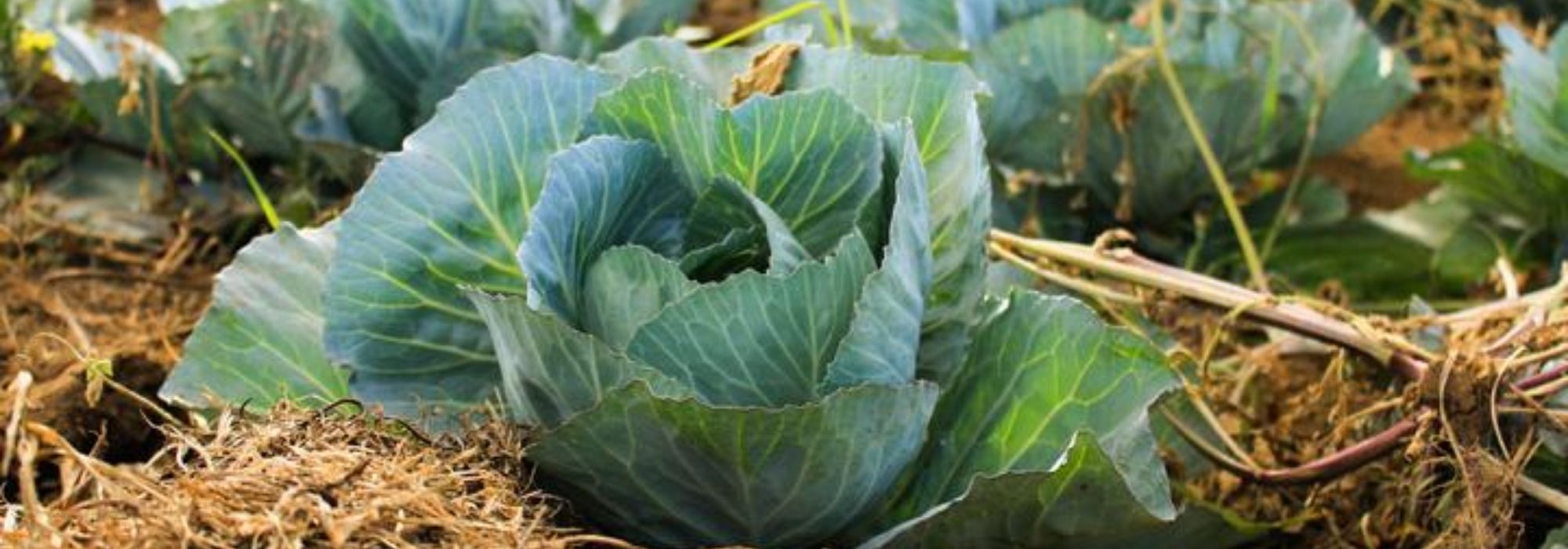
Cabbage: planting, sowing and harvest
Contents
Cabbage in a nutshell
- Cabbage is one of the oldest vegetables
- Green cabbage, Milan cabbage, Chinese cabbage, or cauliflower, it is now available in numerous varieties
- It grows everywhere and can be harvested all year round depending on the varieties, as long as it is provided with deep soil, excellent fertilisation, and regular moisture
- It can be consumed both raw and cooked and lends itself to an infinite number of traditional or exotic recipes
- It has the advantage of being low in calories but rich in vitamins and minerals: it is a significant weight-loss ally!
A word from our expert
Cauliflower, Broccoli, Romanesco broccoli, white cabbage, Chinese cabbage, Brussels sprouts, as well as red cabbage, kohlrabi, kale, or curly cabbage… Today, the result of multiple selections, cabbage offers an astonishing variability of shapes, colours, and flavours!
Between winter cabbages, summer cabbages, and autumn cabbages, there is such a diversity that we can now enjoy cabbage and benefit from its qualities all year round. Each has its own sowing, planting, and harvesting period.
There are as many cabbages as there are good reasons to consume them. And that’s great because cabbages lend themselves to numerous recipes. They can be eaten raw or cooked, in stews, soups, braised, stuffed, baked, or fermented in sauerkraut!
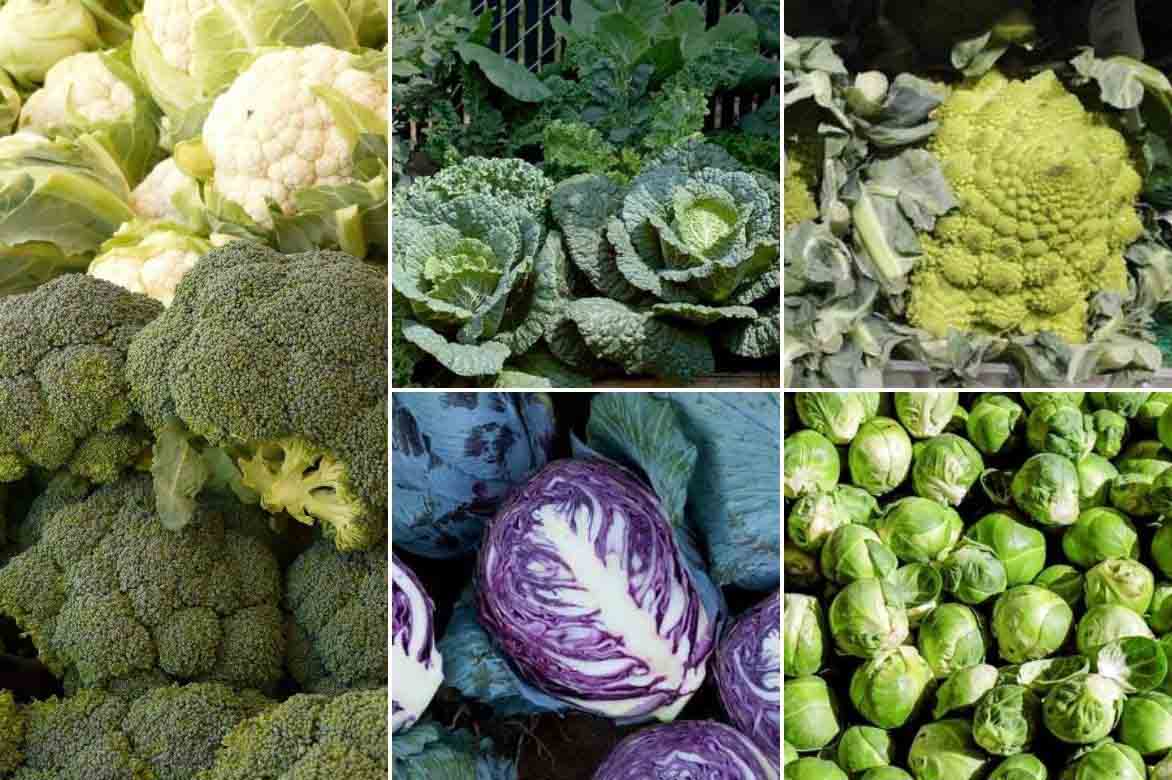
Cauliflowers, broccoli cabbages, Milan cabbages, red cabbages, Romanesco cabbages, Brussels cabbages
Growing cabbages is easy as long as you meet their requirements: they thrive in full sun and in loose, rich soil with plenty of organic matter, deep enough to stay cool on the surface during summer. Let’s be clear, it’s a greedy vegetable that demands well-manured soil.
Very low in calories, cabbage is excellent for health. It is rich in vitamins C, B9, K, and provitamin A, as well as minerals and trace elements: this cruciferous vegetable has everything to please.
Discover in our guide everything about cabbage, how to grow it, its storage, the benefits of cabbage? The different cabbages or various ways to cook it!
Description and botany
Botanical data
- Latin name Brassica oleracea
- Family Brassicaceae
- Common name Cabbage
- Flowering variable depending on varieties
- Height variable depending on varieties
- Exposure Sun, Partial shade
- Soil type rich and light
- Hardiness variable depending on varieties
Cabbage (Brassica oleracea) is an herbaceous vegetable plant belonging to the large family of Brassicaceae (formerly Cruciferae), which includes nearly 4000 species. It is among the oldest vegetables cultivated in Europe, in Mediterranean regions and in Asia. Successive selections of wild common cabbage have led to numerous cultivated varieties, adapted to all temperate climates, very diverse in their appearance and taste. There are nearly 250 varieties of cabbage.
Depending on the species and varieties, we consume the leaves, the fleshy inflorescence, the buds, as with Brussels sprouts, the root, or the stem as with kohlrabi.
Among the main species most commonly cultivated in our gardens:
- Head Cabbage (Brassica oleracea capitata, with capitata in Latin meaning “head”) which includes Smooth-headed cabbages like red, white, or green cabbages and curly-headed cabbages (Brassica oleracea var. sabauda) such as Milan Cabbage, composed of strongly crinkled or frilled leaves. It can be eaten raw in coleslaw, grated, in soup, stew, fermented, or in sauerkraut.
- Curly Kale (Brassica oleracea acephala sabellica): it does not form a head or “cabbage” but has large, very frilled green leaves. It is eaten raw in julienne in salads or fermented.
- Kohlrabi (Brassica oleracea var. Gongylodes): it forms a bulb 6 to 20 cm in diameter above ground, topped with large rosette-like leaves like the Azur Star kohlrabi. It is enjoyed raw or cooked.
- Cauliflowers: they include cauliflowers, broccoli, and Romanesco cabbage. They consist of firm clusters surrounded by green leaves. Originally white, their heads can now be coloured, green, yellow, orange, or purple. They can be consumed raw in salads or cooked, steamed, or sautéed, or even in gratin with béchamel.
- Brussels Sprouts: They form small, firm axillary heads also called “buttons.” They offer a sweeter and milder flavour than other cabbages and are consumed roasted, braised, boiled, or steamed.
- Perpetual Cabbage (Brassica oleracea var. Ramosa or Aubenton cabbage): This is a perennial cabbage that does not form a head and is grown for its young shoots with a taste similar to broccoli. It can be consumed raw or cooked.
- Chinese Cabbage (Brassica rapa): Represented by Pak Choi and Pé Tsaï, it resembles lettuce. Its leaves are suitable for Asian recipes and can be consumed in salads or sautéed in strips in a wok.
- Kale: This is a cabbage that does not form a head, cultivated for its large frilled leaves, which vary in colour from green to dark red. This unique cabbage, still relatively unknown in Europe, is enjoyed raw or steamed, in gratin, in quiche, in purée, in fritters, and even in smoothies, and more widely, like spinach.
Cabbages are distinguished by the shape of their stems, leaves, or flowers. The stem is more or less short and thick. In Brussels sprouts, it grows vertically and can reach up to 80 cm in height, while in kohlrabi, the stem, instead of rising like that of other cabbages, remains in the ground where it swells.
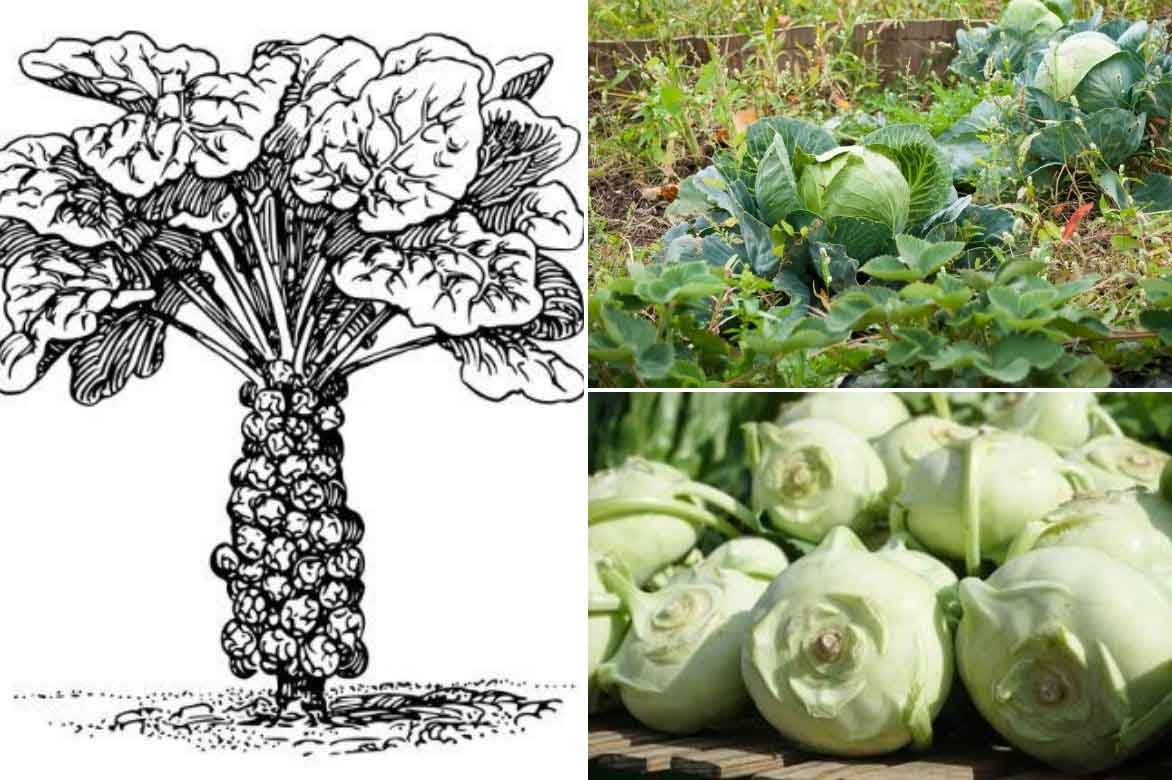
Brussels sprouts, Milan cabbages, kohlrabi
The foliage also varies from one species to another. The leaves can be entire or deeply lobed, elliptical, ovate, oblong, lanceolate, or round, thick, smooth, frilled, or crinkled, with white or dark veins, crossed by a large white midrib, or even have dentate margins.
Head Cabbage or Smooth Cabbage develops into a rosette of leaves, 30 to 60 cm high and wide. It produces in its heart a more or less tight head, which can be round, slightly flattened, or conical in pointed varieties such as the Cabbage ‘Cœur de Bœuf Moyen de la Halle’. The leaves of Head Cabbage are flat and smooth, overlapping one another. Those of Milan cabbage are veined and deeply crinkled, but it should not be confused with curly kale. The colour of the leaves varies according to the varieties: from very light green, almost white, to dark green, sometimes slightly bluish, to red tinged with violet, to almost black in the ‘Tête Noire’ Red Cabbage.
Flowering cabbages offer beautiful firm clusters (flower buds), with more or less fine grains, white or orange in the case of ‘Orange Sunset’ Cauliflower, green in broccoli, but sometimes purple as in ‘Early Purple Sprouting’ Broccoli or in ‘Graffiti F1’ Cauliflower. Romanesco Broccoli is a cabbage distinguished by its very particular and ornamental pyramidal head.
Like all crucifers, flowering, when it occurs, takes the form of flowers composed of 4 yellow or white petals arranged in a cross on 4 sepals. They appear on stems growing in the axil of each leaf. Nectariferous, they attract pollinators.
It has been cultivated since antiquity and was widely consumed in France throughout the Middle Ages. Its land of choice remains Brittany, where 80% of French cabbage is grown.
“`
Main species and varieties
Cabbage, whether flowering, leafy, or stemmed, here is a non-exhaustive selection of varieties chosen for their taste quality and success in the vegetable garden. Check out our wide range in-store to discover more!
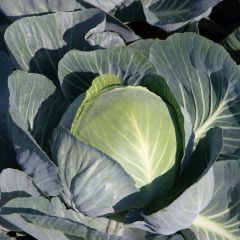
Cabbage Tête de Pierre F1 - Brassica oleracea capitata
- Height at maturity 40 cm
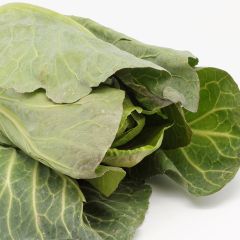
Organic Cabbage Pointu de Chateaurenard - Brassica oleracea capitata
- Height at maturity 50 cm
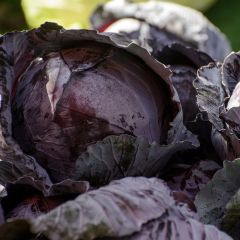
Red CabbageTête Noire - Brassica oleracea capitata
- Height at maturity 35 cm
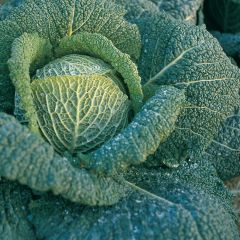
Savoy Cabbage Aubervilliers
- Height at maturity 40 cm
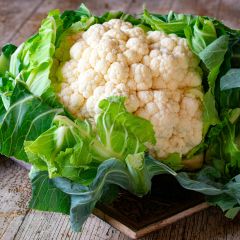
Cauliflower Extra-Early of Angers - Brassica oleracea
- Height at maturity 50 cm
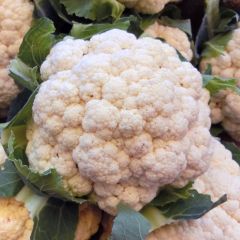
Cauliflower Merveille de Toutes Saisons
- Height at maturity 50 cm
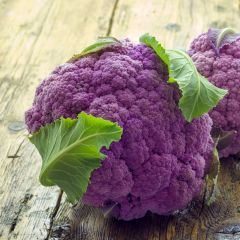
Cauliflower Graffiti F1 (purple)
- Flowering time October to December
- Height at maturity 50 cm
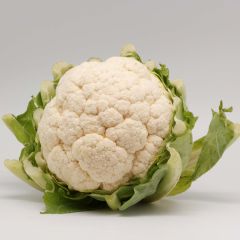
Cauliflower Thabor plugs - Brassica oleracea
- Height at maturity 60 cm
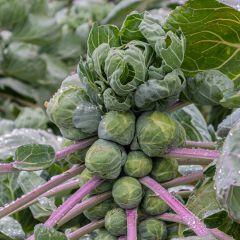
Brussels Sprouts Rosny - Brassica oleracea gemmifera
- Height at maturity 75 cm
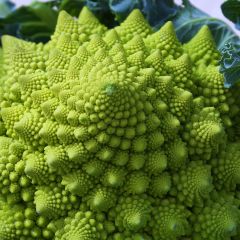
Romanesco Broccoli
- Height at maturity 50 cm
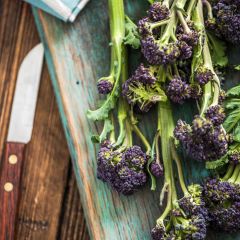
Broccoli Early Purple Sprouting
- Height at maturity 60 cm
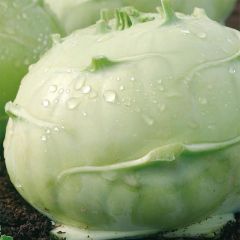
Early White Vienna Kohlrabi - Brassica oleracea gongylodes
- Height at maturity 35 cm
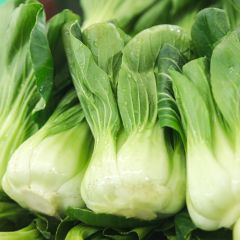
Pak Choi Chinese Cabbage Canton Dwarf - Brassica pekinensis
- Height at maturity 30 cm
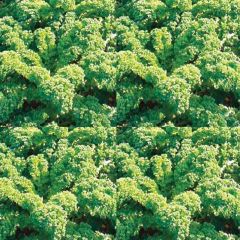
Half-dwarf Green Kale - Brassica oleracea acephala
- Height at maturity 60 cm
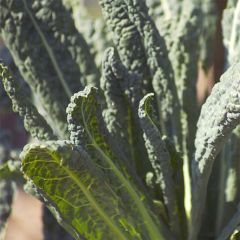
Tuscan Kale Nero di Toscana - Lacinato kale
- Height at maturity 90 cm
Discover other Cabbage seeds
View all →Available in 1 sizes
Available in 1 sizes
Available in 1 sizes
Available in 1 sizes
Available in 1 sizes
Available in 1 sizes
Available in 1 sizes
Available in 1 sizes
Available in 1 sizes
Sowing and planting cabbage
Where to plant it?
Cabbage is easy to grow in all climates. Curly cabbage or heading cabbage, for example, are quite hardy, making them well-suited for regions with harsh winters. Winter cabbage, late cabbage, summer cabbage, early cabbage—cabbages can be grown in almost all regions and throughout the year, depending on the varieties.
Despite the various forms this vegetable takes, all cabbages have the same growing requirements. They thrive in full sun or partial shade in warm regions. Plant them in deep, well-worked, loose soil that is well-fortified with compost but moderately rich in nitrogen (excess nitrogen can promote foliage and diseases). Cabbage prefers soil that remains fairly cool and never dries out. It generally does well in cool, rainy climates.
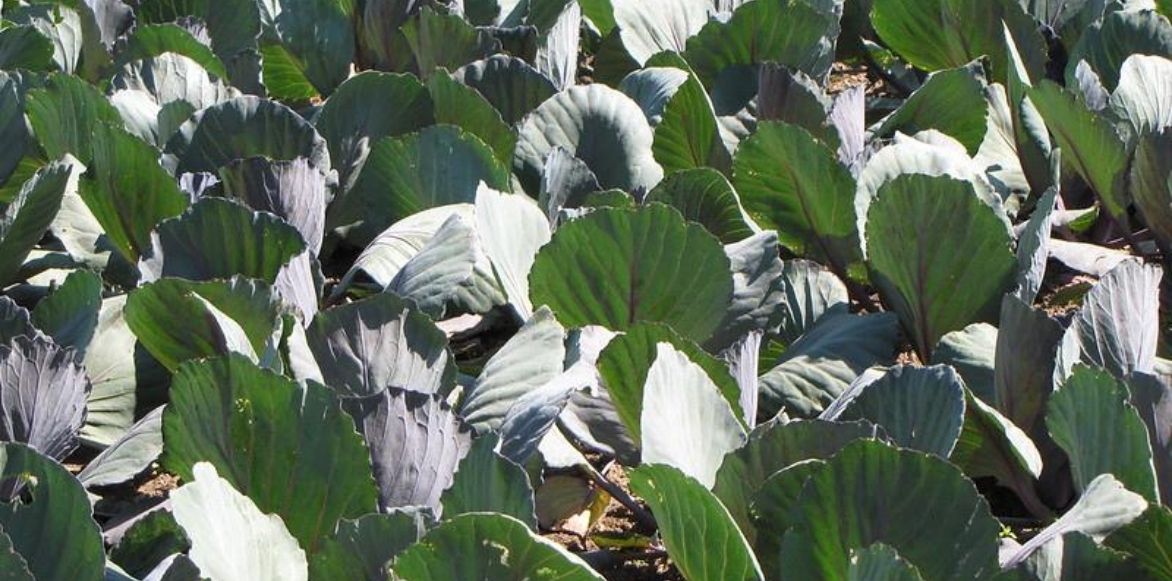
Cabbages thrive in cool, rich soil
When to sow cabbages?
There are as many varieties of cabbage to sow as there are to harvest! Cabbage can be sown and harvested almost all year round. Spring varieties are harvested from late April to June, while summer, autumn, and winter cabbages follow. Always refer to the advice provided on seed packets regarding the recommended sowing period.
Sowing begins as early as February, under cover for early cabbages to be harvested in summer, from April to June in a nursery for autumn and winter cabbages, and in late summer and early autumn for spring cabbages. For reference:
- Curly cabbage is sown from June to September for a harvest from October to February
- Heading cabbages and Milan cabbage are sown from February (under cover) to June for a harvest from August to December
- Broccoli cabbages are sown from February to October, depending on the varieties
- Brussels sprouts are sown from February to May, depending on the varieties, for a harvest from September to December
How to sow cabbages?
You can prepare seedlings at home, under cover from autumn to late spring, or in a nursery for the rest of the year, which will be planted in the vegetable garden once all risk of frost has passed, or you can proceed with direct sowing in place when frost is no longer a concern.
Seedling preparation:
- Fill pots or a seed tray with seed compost,
- Sow the seeds at a depth of 1 to 2 cm,
- Lightly cover with compost or vermiculite,
- Water gently.
Keep warm and in light, at a minimum temperature of 7°C and a maximum of 30°C, depending on the varieties, usually around 15°C. Maintain the substrate moist but not waterlogged until germination, which typically takes 5 to 14 days. When the seedlings are sufficiently developed to be handled, thin them out, keeping only the most vigorous seedlings, and transplant them to the garden when no frost is expected. During planting, usually when the seedlings have at least 4 or 5 leaves, respect the spacing by keeping only one plant every 35 to 80 cm, depending on their development.
Sowing in the open ground, directly in place (after mid-May):
- Trace furrows 1 to 2 cm deep, spaced about 5 cm apart, in well-amended, finely worked soil,
- Sow the seeds and cover them with a fine layer of soil,
- Firm down and water lightly to avoid displacing the seeds,
- Keep the soil moist until germination,
- When the seedlings are well-developed, thin them out, keeping only one plant every 30 to 80 cm.
- All our secrets for successful cabbage sowing are in our guide
- Find more tips for successfully growing cabbages on our blog!
Read also
Sowing and pricking out cabbagesHow to plant cabbages?
Choose from our young oleraceous plants. This is a crop for which you need to allocate sufficient space per plant.
- Dig a hole corresponding to the volume of the young plant,
- Plant deeply, adding a good handful of well-matured compost to each plant and cover it with soil,
- Firm the soil and water to keep it moist,
- To aid establishment, water regularly at the base.
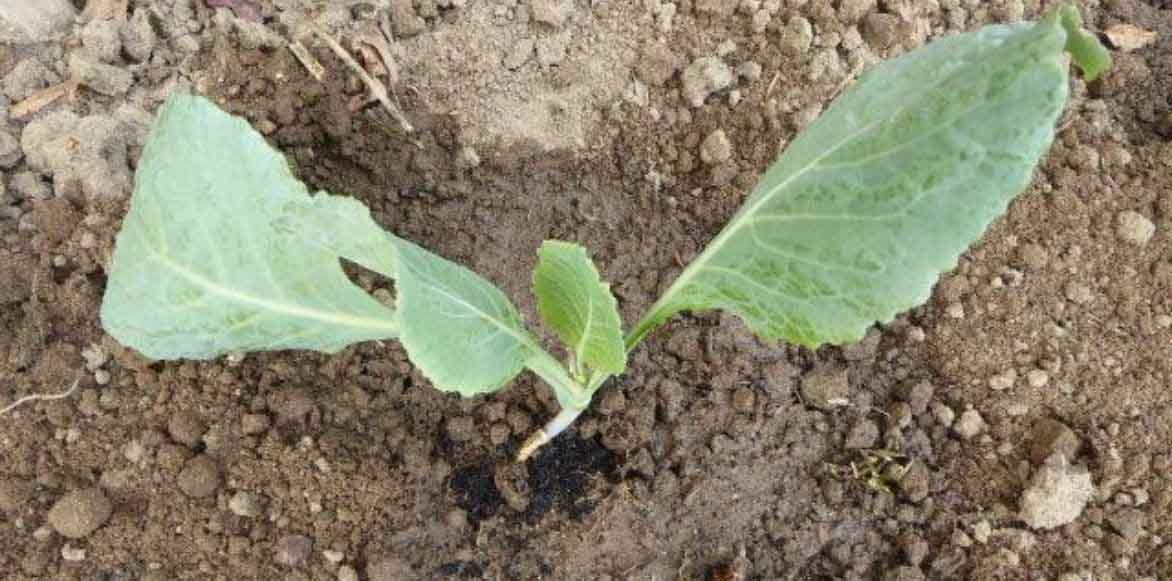
Do you know how to plant cabbages?
Care and associations
All cabbages are greedy vegetables that thrive in rich, organic, loose, deep, and cool soil. They prefer soil that remains cool, so consider mulching around their bases, especially in summer, with fine layers of grass clippings mixed with fallen leaves.
Ideally in autumn, it is advisable to add well-matured compost at a rate of 3 to 4 kg per m² before planting.
Cabbages, in general, are quite demanding in terms of water and are sensitive to drought: regular watering, but without excess water, is key to a good harvest. Regular weeding and hoeing are essential.
In cold regions, mulch the bases of winter cabbages and protect their heads with a cover to keep them warm.
Cabbage is a vegetable that depletes the soil; it is important to practice crop rotation in the plots to prevent diseases: wait four years before replanting in the same spot.
Cabbage does not appreciate the presence of alliums such as chives, leeks, garlic, or shallots, or other brassicas like radishes or turnips. However, it forms beneficial associations with beetroot, cucumber, squash, courgettes, potatoes, tomatoes, or with legumes like beans and peas. Avoid proximity to strawberries and fennel. Feel free to surround it with useful flowers in the vegetable garden, such as Gaillardes, Tagètes, Zinnias, Cosmos, Nasturtiums, especially to help keep aphids away from the cabbages, or beautiful herbs like Dill and lemon balm. Cabbage enjoys the proximity of celery, whose scent repels the cabbage moth.
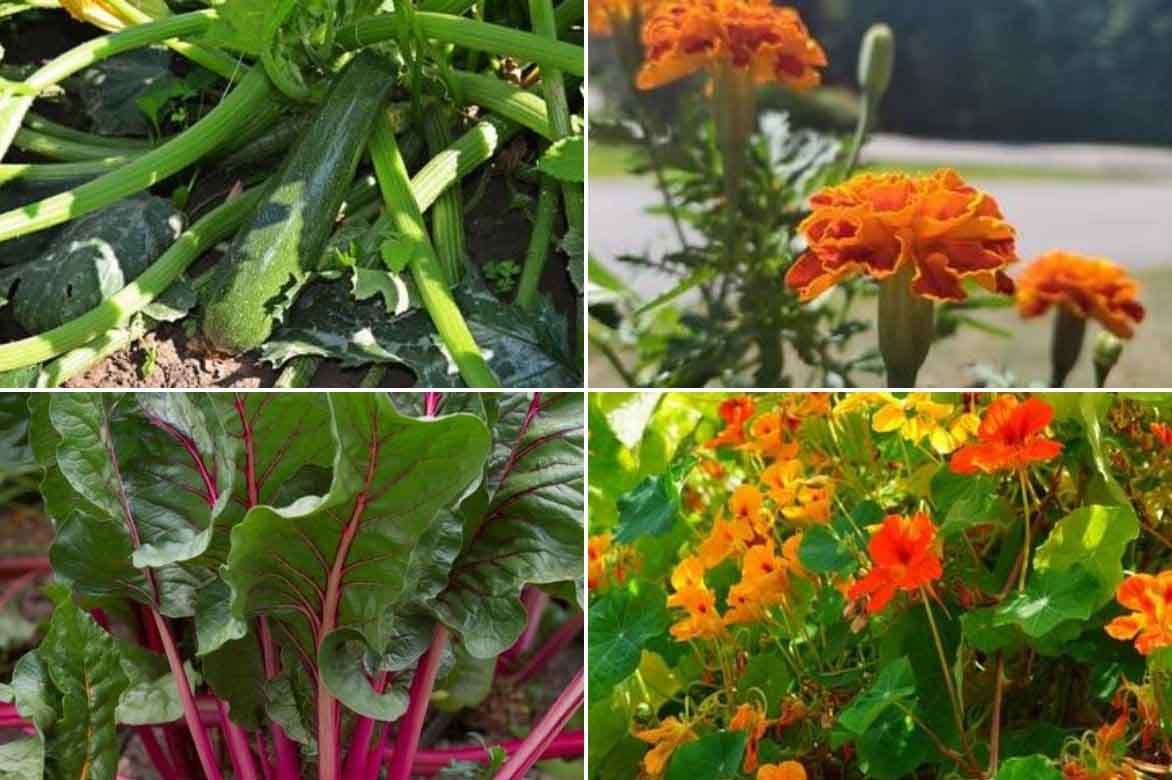
Cabbages appreciate the company of beetroot and courgettes; don’t hesitate to plant around tagètes and nasturtiums!
Most common diseases
Cabbage is quite vulnerable.
It is particularly sensitive to cabbage root fly disease caused by the larvae of a tiny fly, the gall midge: they inhibit growth, preventing the head or flowers from developing.
On their part, flea beetles attack the leaves, riddling them with small holes, especially in dry and warm weather.
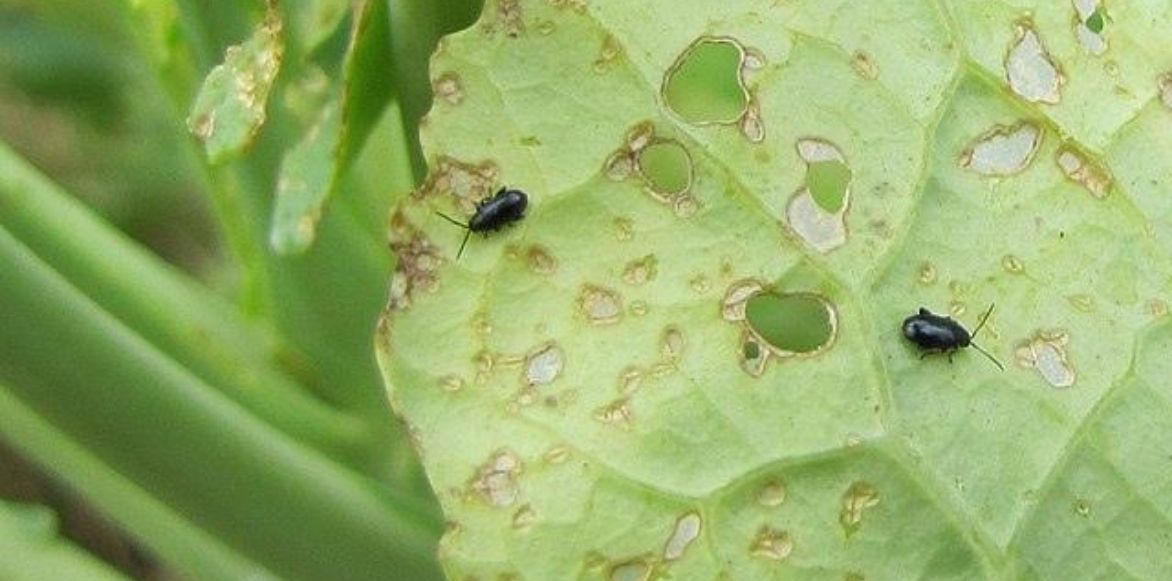
Typical perforations on a cabbage leaf that has suffered an attack from flea beetles
To combat cabbage fly, which causes wilting, followed by yellowing and rotting of the collar: avoid spreading fresh manure, regularly hoe and water the leaves to disrupt the fly’s laying.
Against the cabbage white butterfly, a daytime butterfly, cream-white with a black spot, whose caterpillars devour the lamina of the leaves, and the nocturnal moth that also attacks cabbage leaves: Spray tansy infusions weekly and remove young caterpillars before they cause too much damage.

The infamous cabbage white butterfly feasts on the leaves!
For these pests, the approach is the same: there’s no need to pollute your vegetables with insecticides; as a preventive measure, we recommend using insect netting to protect your cabbages. These nets are easy to set up and reusable to protect, for example, your other vegetable crops like carrots and leeks.
It is wise to protect young plants freshly transplanted from the appetite of slugs: use fern manure to combat their attacks, spread wood ash, and discover our 7 ways to fight slugs effectively and naturally and how to make a slug trap.
Avoid overly acidic soils that tend to promote cabbage root gall, a disease caused by a fungus. To prevent your cabbage leaves from wilting: plant in slightly calcareous soil and then spread wood ash around your plants. Unfortunately, when the foliage wilts, it means the fungus has already attacked the roots; swellings form and eventually rot, leading to the death of the plant. In case of infestation, there is no remedy; uproot and burn the contaminated plants.
Powdery mildew is a fungal disease favoured by warm, humid weather that also threatens certain varieties of cabbage. It manifests as white, powdery spots on the leaves; these eventually dry out, production decreases, and the plant dies. Consult Virginie’s article for preventing and combating powdery mildew.
A gardener’s little tip: Don’t forget the flowers! As a preventive measure against cabbage diseases, grow trap plants like nasturtium and maintain a rotation of at least 5 years between your cabbage crops.
→ Learn more in our article: Cabbage diseases and pests
Harvest and storage
When and how to harvest cabbages?
Almost all year round, depending on the varieties! Harvesting is done with a knife before flowering. When the cabbage forms a nice head for the round cabbages and before the leaves start to yellow. It is picked by cutting it close to the ground. Cauliflower is harvested when the head is firm, also cutting it close to the ground. Broccoli is harvested by first cutting the terminal head and then the side shoots. Brussels sprouts are harvested starting from the bottom of the stem, cutting the small heads. Curly cabbages are harvested leaf by leaf, depending on needs. Kohlrabi (75 days after sowing on average) is harvested by simply pulling it up.
Storage:
- Head cabbages can be kept for 4 to 5 days in the refrigerator and can remain in the ground for quite a while. They also freeze very well after being blanched in salted boiling water. Finally, making sauerkraut (lacto-fermentation) allows for a tasty preservation of white or red head varieties.
- Kohlrabi keeps quite well in a silo or cellar and lasts several days in the refrigerator. It also freezes very well after being blanched for 5 minutes in salted boiling water.
- Cauliflowers, Brussels sprouts, curly cabbages, and kale do not store very well. It is best to consume them quickly after harvesting. They last a few days in the refrigerator. You can freeze them after blanching in salted boiling water.
- Chinese cabbage can be stored in the refrigerator for a few days.
Uses and nutritional benefits
Cabbage can be consumed both raw and cooked; it is prepared differently depending on the species, grated in salads, braised to accompany meat and fish dishes, stuffed, in gratins, or even in soups and sauerkraut.
It is a remarkable vegetable as it is low in calories (only 20 to 30 calories per 100 grams of cabbage): it is therefore an excellent weight-loss vegetable! Moreover, it is a little treasure rich in vitamins C, B6, and B9, and it also contains a lot of fibre and minerals like calcium. Additionally, it is packed with flavonoids and antioxidants, substances beneficial for cancer prevention.
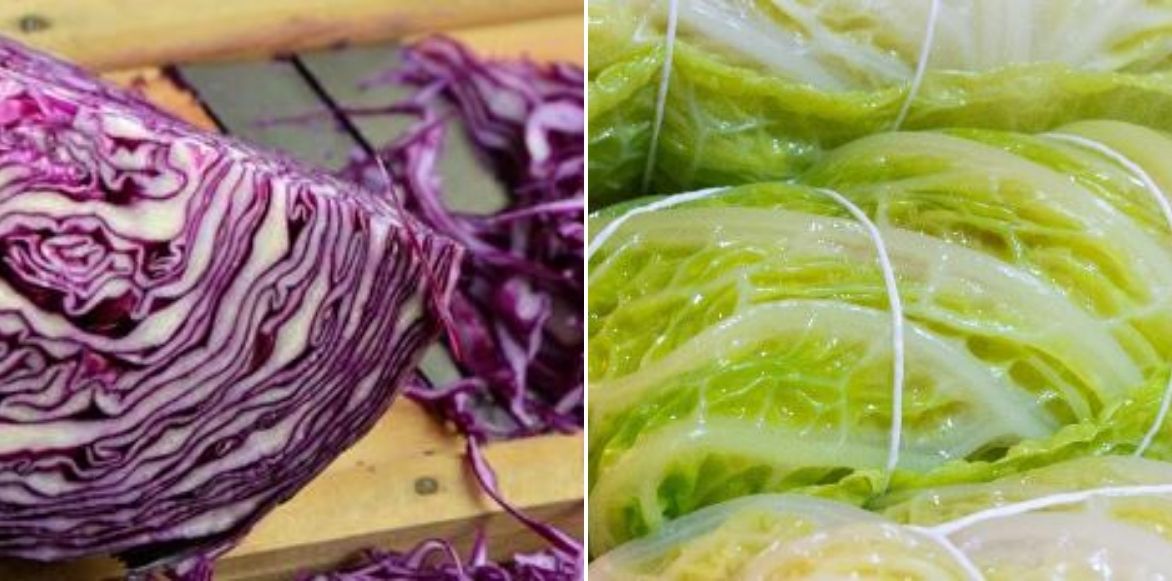
Whether raw or cooked, cabbage is a true health food!
Useful resources
- Find our numerous varieties in our ranges of cabbages
- Article: How to combat flea beetles and protect cabbages?
- Article: 6 Chinese cabbages to discover, Spring cabbage or early cabbage: how to grow it?
- Article: Growing Daubenton cabbage
- Article: Successfully growing Brussels sprouts
- Article: 6 cauliflowers to discover, 6 Milan cabbages
- Our tutorial: How to make cabbage manure?
- Article: Forage plants, 5 vegetables for animals
- Article: The most water-hungry vegetables
- Discover How to make homemade sauerkraut in Ingrid’s tutorial!
- Learn more about ornamental vegetables to grow in the vegetable garden
- Article: Which cabbage to choose in cooking?
- Subscribe!
- Contents
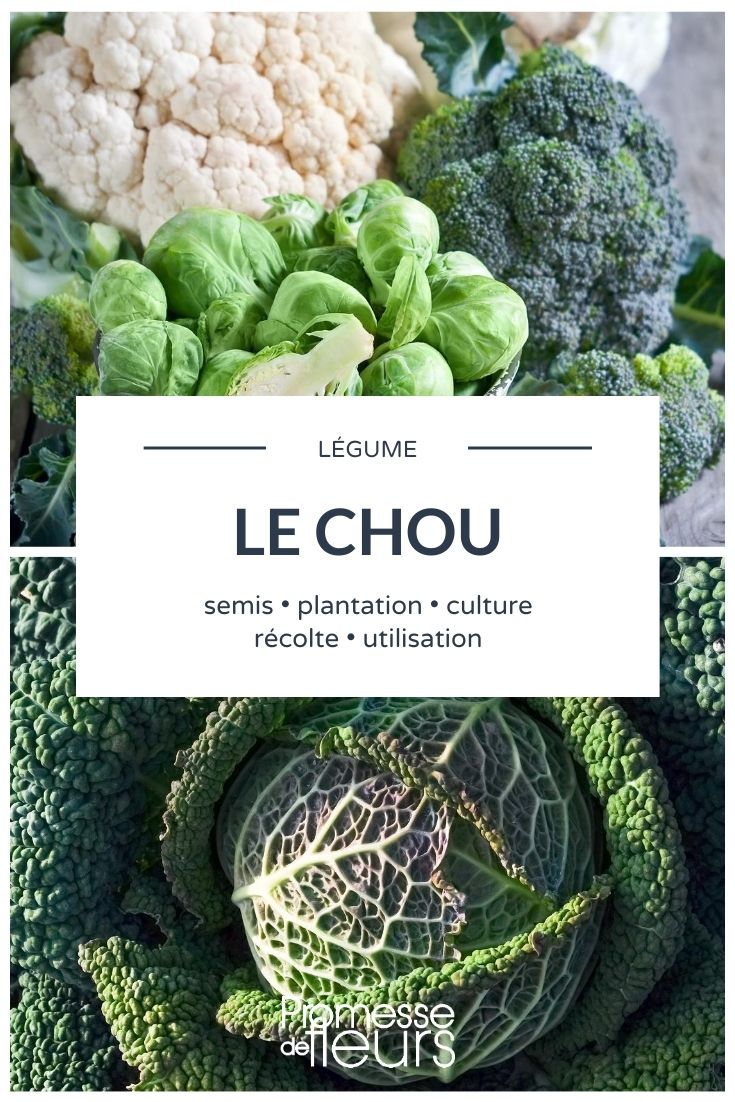































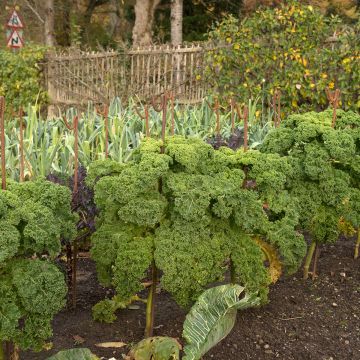
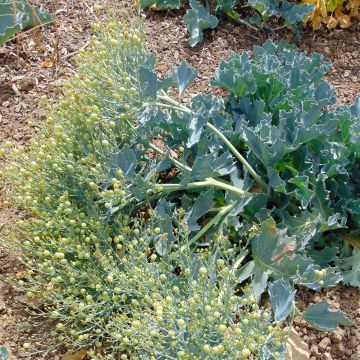
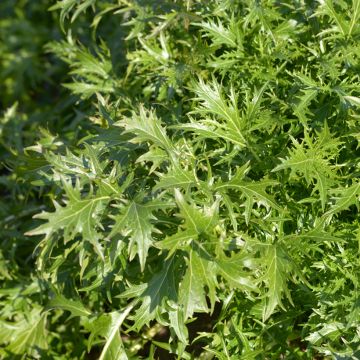
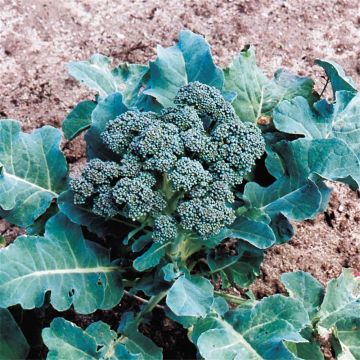

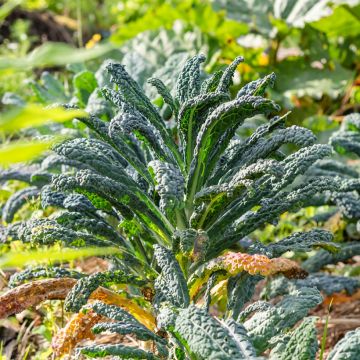
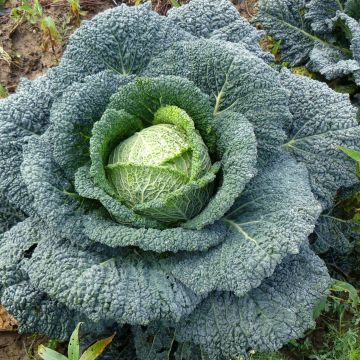

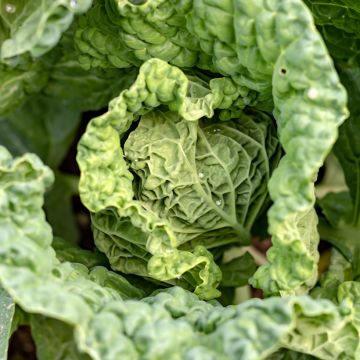
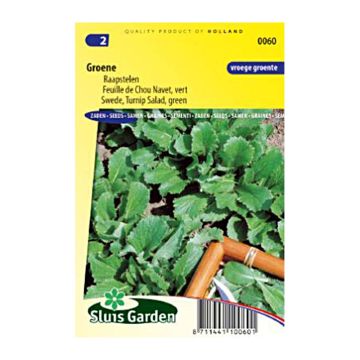
Comments